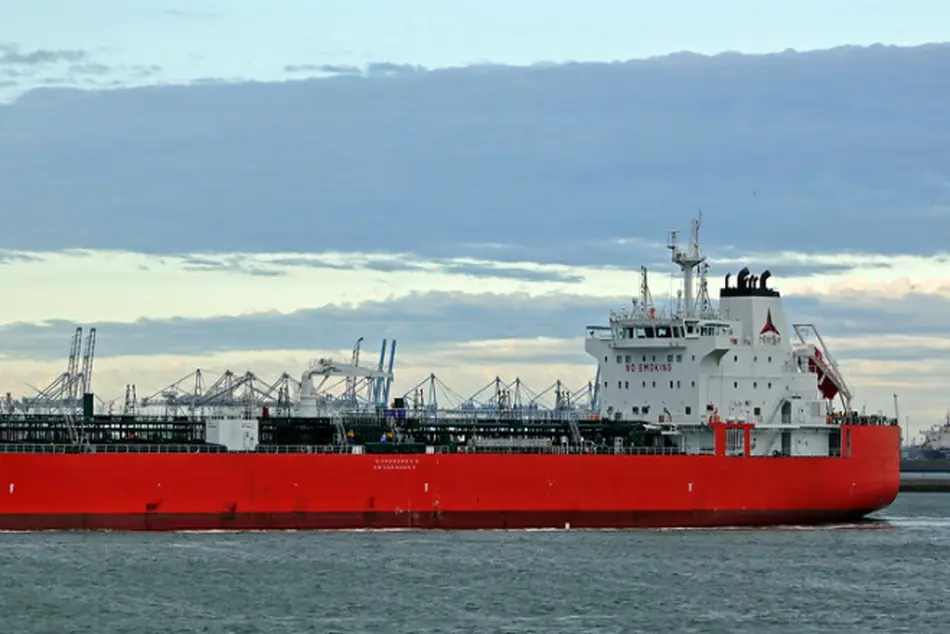LNG Shipping Stocks Gain for a Second Week
The UP World LNG Shipping Index (UPI) rose 0.67% to 168.40 points, while markets remained quiet despite geopolitical shifts made by the new U.S. administration, reports UPI analyst Tomas Novotny. “This can potentially increase LNG market competition, leading to lower prices but higher sales.”

The UP World LNG Shipping Index (UPI) rose 0.67% to 168.40 points, while markets remained quiet despite geopolitical shifts made by the new U.S. administration, reports UPI analyst Tomas Novotny. “This can potentially increase LNG market competition, leading to lower prices but higher sales.”
The UPI saw moderate growth, with Awilco LNG (+9.1%), BP (+8.5%), and Cool Company (+6.8%) among the top gainers, while Tsakos Energy (-5.2%) and Capital Clean Energy (-4.9%) declined. Many stocks are nearing key resistance levels, hinting at possible breakouts. In the short term, volatility is expected to rise, but the long-term outlook remains positive, driven by LNG demand growth and potential new contracts.
The UP World LNG Shipping Index (UPI), which tracks listed LNG shipping companies, gained 1.13 points (0.67%), closing at 168.40 points, while the S&P 500 index rose by 1.47%.
The past week has been quiet on the stock markets, even though forces weakening international co-operation are in motion. “Of course, we are referring to the administration of the new US President, who is going hard after his own. This shift may be positive for the LNG shipping sector, as it will increase competition in the LNG market, bringing prices down and sales up.”
The UPI rose for the second week and came just below its January and October peaks. Growth was more moderate, and none of the companies achieved double-digit increases this time. On the other hand, there were no double-digit losses either.
Awilco LNG had the biggest gain, correcting the previous decline by rising 9.1%. BP formed a growth gap, ending the week with an 8.5% gain. BP continues to increase following the entry of the Elliott Management fund.
Cool Company also corrected its prior decline, gaining 6.8%. “Given the evolution of its chart, it's hard to say whether this is a correction of a downtrend or a reversal into an uptrend in the medium term. We'll be wiser if growth continues above the $9 level.”
"K" Line rose 5.4%, but the stock returned to its previous range. Mitsui O.S.K Lines and NYK Line have reached the upper limits of their bands, so both are below resistances. MOL was up 3.5%, NYK was up 2.5%.
The last three companies which made a notable move higher were Shell, Korea Line Corporation, and Chevron. Shell rose 1.9%, while the other two added 1.8%. Shell has also reached a threshold that it may try to break and continue to rise.
The biggest decline was experienced by Tsakos Energy Navigation, which lost 5.2% and came close to continuing its downtrend.
Capital Clean Energy Carriers returned to the sideways range after two weeks with a 4.9% decline. Dynagas LNG Partners is approaching the previous range after a quarterly rise surpassing the $5.4 mark. It has now lost 4.3%.
Excelerate Energy has broken through support, but most of its loss has been above it. The decline was 3.7%.
“The short-term outlook remains cautiously optimistic, though we expect increased volatility in the coming weeks. LNG spot rates stayed low, but the impact remains marginal for most UPI constituents. The market is watching for potential breakouts at key resistance levels, which could determine the next price direction," says Novotny.
“Our outlook remains positive long-term. Demand for LNG is expected to grow, supported by situational or management-driven actions and the potential for new long-term contracts. Investors should monitor policy developments, market competition, and upcoming corporate earnings for further direction.”


